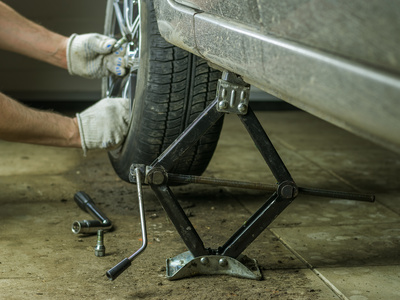- July 1, 2020
- By Auto Repair Shop Fraser 48026
- In Tires
- Tags fraser mi auto shop, tire rotation, tires, when to rotate tires
- 1018
- 0

Tire rotation refers to the process of moving tires around within the vehicle. In simple words, it is the process under which tires change their place — the rear tire comes in the front and the front tires go to the back. Similarly, the tires on the left can go to the right and vice versa. There can be several different tire rotation patterns. In general, tire rotation must be performed after every 50,000 to 75,000 miles. However, the perfect time to perform tire rotation varies from tire to tire. In most cases, this information is provided on the user manual.
Tire rotation is considered vital as it extends the life of tires. It also ensures that the health of all tires is the same so that the balance stays maintained.
Consider this example: when vehicle owners do not rotate their front tires, the rear tires end up having significantly higher tread than the front tires. This state of tires can prove to be perilous on wet roads. Similarly, in cars with suspension and alignment problems, not rotating tires can reduce the life of the tires. For all of these reasons, most tire makers make tire rotation mandatory for keeping a warranty in force.
Front-Wheel Drive Vehicles
The location of the tire on a vehicle greatly determines the life of a tire. For instance, in the case of front-wheel drive vehicles, the front wheels are responsible for transferring power to the road and pushing the vehicle ahead, and thus, in such vehicles, front tires wear faster than rear tires.
To rotate tires of a front-wheel-drive vehicle, the front tire on the left side of the car must be moved to the right side on the rear wheel of the car and the front tire on the right side of the car must switch places with the rear left wheel.
Rear-Wheel Drive
In the case of rear-wheel-drive vehicles, the front wheels are responsible for steering whereas the rear wheels transform power to the road. Thus, in the case of rear-wheel-drive vehicles, the wear and tear of tires are more balanced. However, since both the sets of tires perform different tasks, the wear and tear are balanced but are not exactly the same.
Thus, in the case of rear-wheel-drive vehicles, the right-hand front tire should replace the right-hand rear tire and the left-hand front tire should replace the left-hand rear tire.
All-Wheel Drive
In the case of all-wheel-drive vehicles, rotating tires is not an option but a necessity as these vehicles have a significant difference in their tread depth. Most of the all-wheel-drive vehicles work on the front-wheel mode most of the time. Thus, in the case of all-wheel-drive vehicles with tread variance of 2/32 of an inch, tire rotation follows the same pattern as in the case of front-wheel-drive vehicles: right-hand front tire replaces the left-hand rear tire and vice versa. However, in the case of four-wheel-drive vehicles with tread variance of more than 2/32 of an inch, rear-wheel-drive vehicle tire replacement pattern should follow
Here’s How to Rotate Tires on Your Own at Home
Tire rotation is not a very challenging process — it can be done at home as well. However, if you are planning to rotate tires on your own, you will need a few things, primarily, wheel chocks, torque wrench, and a jack and jack stand.
Here’s what you should remember while changing tires at home.
For more information about rotating your tires, or any other auto maintenance tips, give Car Guys Auto Center a call today! We can be reached at (586) 285-4444!


